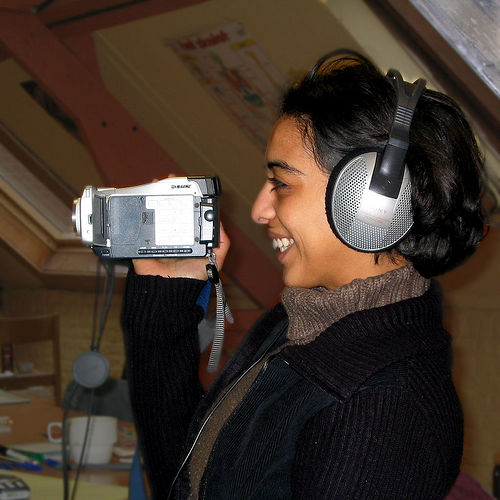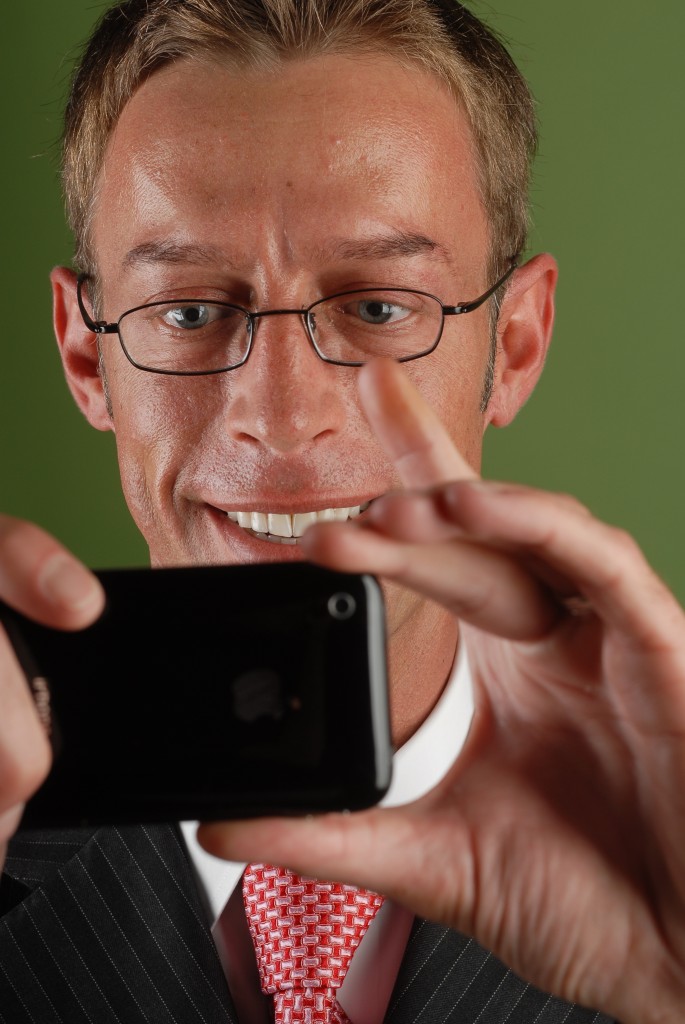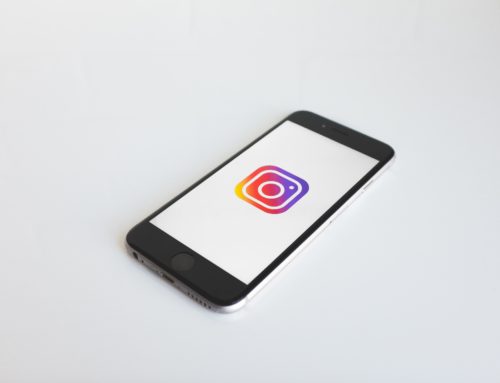 If you’re a public relations professional (or business owner) fixated on getting that One Big Media Hit (Oprah, anyone?), consider this instead:
If you’re a public relations professional (or business owner) fixated on getting that One Big Media Hit (Oprah, anyone?), consider this instead:
The customer is your media.
Repeat after me: the customer is your media.
Image: han Soete via Flickr, CC 2.0
I’ve written before about how good customer service is the best kind of PR.
And so have many other people.
Because if we leave reaching and motivating customers directly out of our strategy, we’re going to be putting the proverbial eggs all in one basket.
And when that basket takes a tumble – as it invariably will – we’ll be left with a mess of broken eggs that we won’t even be able to make an omelet out of.
Here are two stories; they’re stories I’ve told before, but I want to look at them in the context of the premise of this post.
First: the shoes have it
Remember when I told you about my experience with Eidia Lush?
(No, I’m not going to launch into ecstasies over how great those shoes are again, even though they are.)
If you haven’t read the post yet, the short version is:
- I ordered a pair of Eidia Lush shoes via a Groupon
- Their orders got backed up because of the demand generated via Groupon
- I emailed back and forth with them, getting more and more frustrated in the process
- Finally I went on Twitter when I’d had enough of the “senior fashion writer” giving me what I thought was fluff
- EL’s CEO, Nicole Tongson, replied to me immediately via Twitter and then email
- I was pleasantly surprised by her honesty and forthrightness
- The shoes finally came, I loved ’em and ended up writing & talking more about them, as I did on BNET… and WUL earlier… and here again… and have started using them as a case study in presentations.
Second: social media is a jeweler’s best friend
 What people like Dan Gordon, the fourth-generation owner of Oklahoma City-based Samuel Gordon Jewelers, are doing really well is getting customers to tell their stories.
What people like Dan Gordon, the fourth-generation owner of Oklahoma City-based Samuel Gordon Jewelers, are doing really well is getting customers to tell their stories.
Thanks, Dan, for allowing me to use this image of you with your iPhone.
I’ve written about Dan before as well, and his story has also made it into my file of case studies.
Again, long story short, even though SGJ has dramatically reduced its marketing spend over the last few years, it has seen revenue rise equally dramatically.
And Dan – not I, but Dan – credits this to social.
As I said earlier:
I’ve written before about how public relations is really about telling your story.
And what people like Dan and SGJ are doing is using social to break the mold of traditional PR and take it several steps further.
They’re not just telling their own stories well.
They’re doing such a good job of it, that they’re getting their customers and community to tell their stories for them.
When I told his story at GrowSmartBiz 2010, one of my favorite responses was from Vanessa French, when she said, “What a terrific story.”
Stories are all very well
… but what is this “customer is your media” thing?
One of our goals as public relations professionals is to generate awareness for our clients (or organizations), right?
But it’s not the only goal. And it certainly doesn’t – or shouldn’t – stop there.
If we are in the business of public relations, we are in the business of building and maintaining relationships with our organizations’ stakeholders to support business objectives.
Awareness is the first step. But what is the point of it?
What do we want the organization’s stakeholders to do?
Fancy talk and nice words didn’t pay the bills, last time I heard.
So it all comes down to this: what do we want people to do?
Which means we need to embark upon our PR strategies with the end in sight, not work up to them.
When we recognize that customers are an integral part of our outreach, we:
1. Build relationships with them directly, and this is one of the most dramatic impacts that social has had on our work over the last few years.
 Whether it’s Facebook, Twitter, a blog, an online community, you name it – we can reach them directly.
Whether it’s Facebook, Twitter, a blog, an online community, you name it – we can reach them directly.
We don’t have to depend on traditional media to do so.
And when we do so, we are increasing the chances that they will feel better about our brands, our clients, our products, and get to the point where they’ll take the actions that will benefit our businesses.
Just like Eat Your Serial did. Image © Eat Your Serial, used with permission
2. Get the media more interested when they otherwise might not have been, simply because they didn’t know about you.
After I wrote the BNET post on Samuel Gordon Jewelers, you know what happened?
That story generated enough interest to get them a story (and video) on MSN’s Business on Main (and I know this because Dan told me so), and more recently profiled on Portfolio.com.
The fact that Dan is always looking for ways to engage directly with SGJ’s customers certainly doesn’t help hurt (typo update!).
But that fact that SGJ was profiled in a respected online property certainly didn’t hurt either.
3. Literally, the customer is your media.
I don’t get paid to write for BNET, but I like to do it anyway. No Huffington Post-style buyer’s remorse for me.
And even though I’m not a “real” media person, I defy anyone to tell me that BNET isn’t.
This is one of the most interesting things about the new media landscape: that literally anyone – anyone! – could post that one update, send out that one tweet, write that one blog post, that would move our PR strategy forward.
So why on earth wouldn’t we consider making those “anyones” we’re ultimately trying to reach part of our plan from the get-go?
This is also another reason it pays to be polite to everyone, because if you’re an ass clown to your UPS driver, chances are he will say, “Nuh uh” when he wins the lottery and you go begging to him to make a donation for that nonprofit organization you’ve been dreaming of launching.
But I digress.
I’m not telling you to ignore traditional media.
Far from it.
I think traditional media still has an extremely important role to play, particularly in light of the comparative trust it still commands over new media.
But you and I would be complete ass clowns if we made “the media” the sole focus of our efforts, forgetting why we wanted to reach them in the first place.
Which is to reach our audience, our end-users, our customers, our stakeholders.
And on that happy note, I leave you with a neat video of my presentation at What’s Next DC that Green Buzz Agency put together for me – thank you, GBA! – which elaborates a little more.
No, I’m not being egotistical. I said neat video, not neat presentation. Sheesh.
It’s just under 15 minutes; so not a huge time investment for you.
What have your experiences been in incorporating customers into your outreach? Lessons learned? Do share, I’d love to know.



![[EVENT]: PR Hacks for Small Biz (online)](https://shonaliburke.com/wp-content/uploads/2021/06/FB-Ad-1200x800-01-01-01-Copy-500x383.jpeg)





[…] if you build the right kind of community from your customers, they can be your media… and that takes good community […]
[…] They understand the importance of demonstrating to the customer that he or she truly is important. […]
Ok, any post with the phrase ass clown automatically moves to the top of my favorites list ;). And yes, I have absolutely been asked to get a client on Oprah before.
I completely agree with the premise of your post about the value of the customer, need to create content worth sharing and the affect it all has on your brand rep. My question for you is has good PR become a culture issue? IOW, good PR today is engaging with the customer, listening to their story, giving them awesome stories to tell and providing answers and solutions, right? And most companies that invest the time and resources to do that well do so because of their company culture, right?
This is why IMC is so important. Because our departments and turf wars — customers could give a rip. They want answers when they have questions and solutions when they have issues. A company that understands the customer is their media does whatever they can to build relationships with their customers. And they’re likely empowered to do so because of their culture. My two cents.
@JGoldsborough I’m going to have to write more posts with “ass clown” or similar phrases, then. :p
Very good question about whether or not good PR has become a culture issue. I think that’s part of it, but part of it is also an education issue. IMHO far too many PR practitioners will let their clients demand X, Y and Z without asking how it will benefit the business objectives. If we want to be seen as strategic counselors, then we have to provide that counsel in a truthful fashion.
Wonderful post Shonali, as always. Social media is changing how we communicate and these are wonderful examples. We heard another yesterday at PRSA Alaska about a local coffee company whose focus has always been on their coffee, their customer and their community. By keeping everything they do focused on the “three Cs” they have built a tremendously loyal following. It’s amazing how Twitter, Facebook and other tools are changing how we do our work.
@mdbarber Oh, was it the coffee company you told me about? They seemed very cool. “Three Cs” – love that.
[…] Good: If you’re Eidia Lush shoes and you mess up someone’s order, you respond to someone’s social complaint with a real apology. You turn a problem into an opportunity, winning a loyal customer, advocate, […]
Hi Shonali, You have summed up some really important points in PR 2.0. I agree with you about the importance of building brand awareness through online interaction. What’s more, I love the statement that the customer is your media, he/she is your message. This means we are able to ‘navigate’ the message of every our customer to positive perceptions and minimize the bad experience thanks to our attention online and our efforts to stay connected with the customers on the social media web.
I just wanted to highlight: I support the idea that if we are creative enough we can provoke traditional media with the help of social media channels which would be a great result because after all the media obstacles, traditional media outlets are still important and should be not considered dead and useless.
Cheers,
Petya
http://www.higher-and-higher.com/
@Petya Thanks for stopping by, Petya!
[…] This post was mentioned on Twitter by Shonali Burke, Daniel Gordon, Christian Collison, InBoundMarketingPR, Sholanda Aikens and others. Sholanda Aikens said: In Public Relations, The Customer Is Your Media | Waxing UnLyrical – http://bit.ly/f4Yfj4 via @Apture […]
Great post Shonali.. Completely agree that we can’t afford to have silos! Feeding the content food chain, we must bust down those silos! Reach for customers so that customers can become our best brand advocates!
Thanks so much!
@InBoundMktgPR Can we make our mantra, “Down, Silos, Down!” LOL! Thanks so much for stopping by, I really appreciate it.
Video or presentation, it was good. This underscores the power of social. The holy grail of PR and social media integration is a vocal, social brand loyal customer; someone who blogs, videos, likes and shares all the lovely things we want said about the products and services we’re selling. Then the magic happens, as fairy dust and endless bubbles fill the air.. it goes “viral” gets picked up by traditional media, then you get on Oprah. ;-) It’s why brands like Coke have campaigns and programs designed around embracing their fans because those fans are media and they know it. All it takes is a flip cam or a blog or a killer Twitter page; anyone can be a media outlet of one. FWIW.
@3HatsComm Thanks, D. :p I thought the prez was pretty good as well; one of the great things about a video like that is that one can watch one’s self and file away what works and what doesn’t.
It really is an amazing age that we live in, isn’t it?
Great post Shonali. As always, you have a way of explaining things that truly simplifies what defines PR, marketing and social’s purposes in todays interconnected world. I love the title of this post and all of the case studies you present. It tells the stories of the stories told which really give insight to all the various ways PR can be acheived with all the tools we have available. Thanks very much for including me & see you online for sure! :)
@DanGordon Thanks, Dan! I have to thank holley mangham for putting me in touch with you, else all this might not have come about. What I particularly like about you and your approach to SM for SGJ is that you dove in, and you’re measuring what counts. Gold star!